By Brian Hibbs
As I write this, it’s the deadline to order the October “Legacy” re-positioning from Marvel, with the lenticular covers. Marvel has been explicit that if we don’t order the lenticulars by the initial order deadline of 8/24, then we should expect to get allocated on any orders we might place.
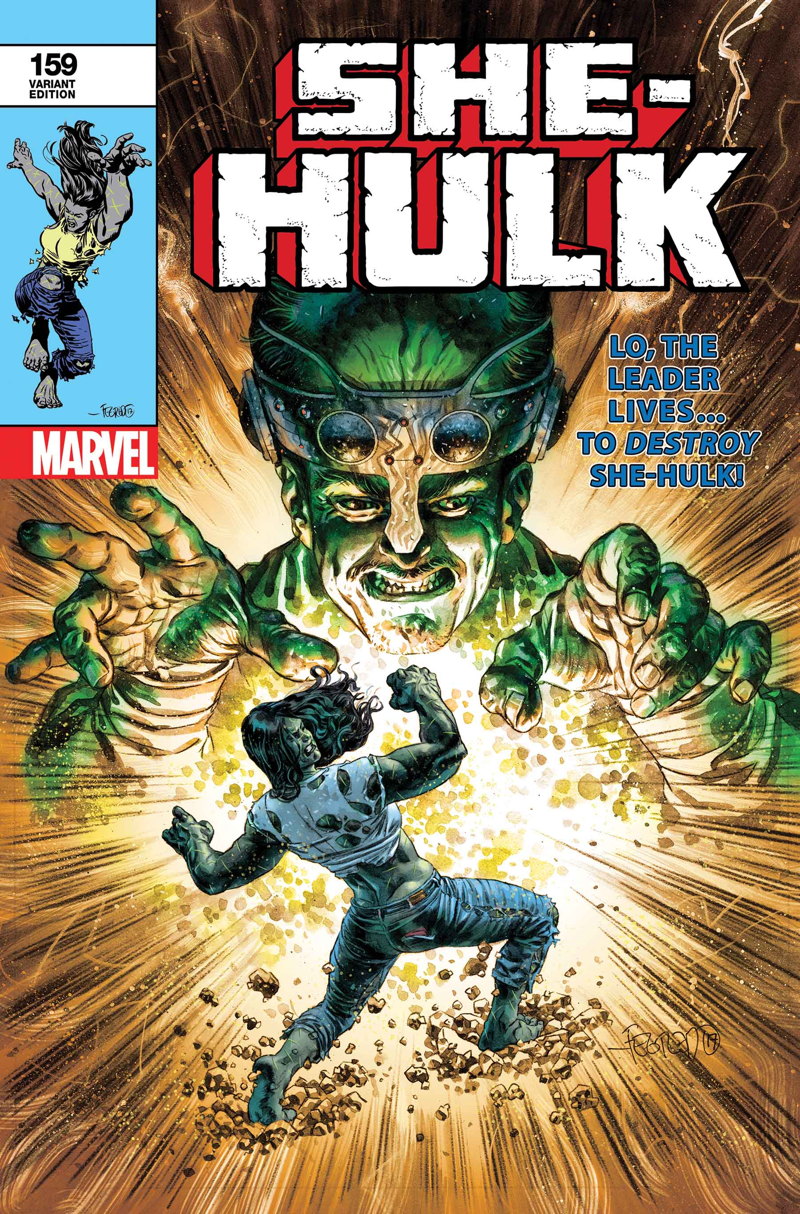
So I thought it might be helpful for some people, to get a glimpse inside the box, so you can understand just exactly what retailers have to think about for a promotion like this one.
As we discussed last month, Marvel is only allowing stores to order any copies of the lenticular covers, if they “meet or exceed” an ordering threshold for a different issue. For example, Marvel expects us to order October’s “Invincible Iron Man” #593 at 200% of what we ordered of May’s “Invincible Iron Man” #7. Please recognize that both comics have exactly the same creative team, and feature the same characters, and that October’s issue is a continuation of the same story that the creative team has been telling for a fair amount of time – this is not a substantially different book or direction. The same is true for virtually all of the “Legacy” series.
It is generally understood by most retailers that a fancy version of a comic will sell better than a “regular” edition, and, more importantly, only a very few number of customers are interested in buying both. In other words, each copy of the lenticular cover sold almost certainly means that you’re selling fewer of the “regular” one.
Finally, it is important to understand that Marvel, for what I believe is the first time in its history, is offering the Lenticular covers at a much smaller discount than usual for most retailers. I, for example, usually earn 56% off the cover price for Marvel comics – I pay about $1.76 for a $3.99 cover price comic. Lenticulars are a straight 50% for all accounts, which means that they’ll cost about $2. That extra twenty-four cents means that the lenticulars cost me about fourteen percent more to stock than the regular edition. Stores that are larger than mine normally earn even better discounts, so that Marvel is asking their largest accounts to pay approximately twenty-two percent more for the lenticular covers.
If “Legacy” is a big hit that brings many new and lapsed readers rushing back to Marvel’s doors, then that math might well work out in the long run – Phil Boyle at seven-store Florida chain Coliseum of Comics has a solid case for going “all in” – but I for one am not sure that this will hit big.
I thought I might help you understand the ordering process a little better by showing you our own math. One thing that’s important to understand is that at no point has Diamond or Marvel done a single thing to make it easier to order these comics. While they gave us a list of “Meet or exceed” targets, at no point did they provide us with the tools to quickly and directly identify the details of these targets ourselves. In order for me to understand what they want me to order of this issue of “Iron Man”, I had to manually look up the original numbers and do the math myself. Conceptually, it should be trivial for the publisher and distributor to push this data down the chain, but instead every retail account in America had to do all of the work on their own. Mine took me nearly ninety minutes to build – ninety minutes that I’ll never get back and took me away of doing actually productive things for my stores… because unfortunately for me my maths told me that buying in like this didn’t make any sense for our stores.
Here’s the chart, for both stores combined, because we’re obligated to order on a company-wide level. Let us discuss it below…
Not all of these columns will necessarily make a ton of sense to a lay person, so let’s walk through them one-by-one. It starts off pretty straight forward with the “Legacy” title, and the “Comparable” book that Marvel identified as the target (the list is not in alphabetical order – it is in order-these-comics-appear-on-order-form, because that’s the practical way in which it will be used by us) In other words, “Amazing Spider-Man” #789 is the “Legacy” book, while #27 of the same series is the comparable.
The next three columns are what the original order of the comparable title was, the percentage of that order Marvel wants me to “meet or exceed” and what that number would therefore become. In other words, ASM #27 was initially ordered at 48 copies. Marvel wants me to order 125% of that, for a total of 60 copies minimum.
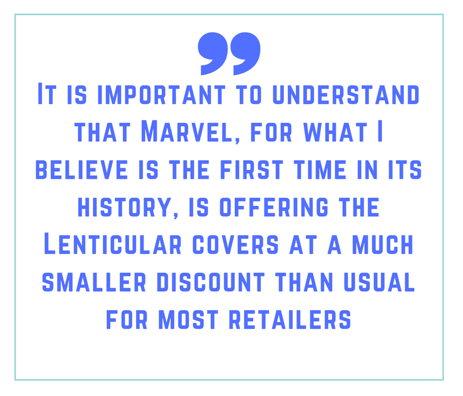
The important consideration on this column is that even though Marvel sets a target based on sell-in, sell-through doesn’t necessarily have much relationship. For example, “Deadpool” sales have been crashing – we sold just fifty-five percent of what we ordered of #34 – but Marvel wants me to order 175% of that number for “Despicable Deadpool” #287. Or what translates as 318% of what I sold of that issue.
We also had to really carefully assess our numbers – I started off by pulling what we received of each of these books, but halfway through the process, I realized that wasn’t quite correct. We had titles like “Cable” and “Defenders” (with the asterisks) where Marvel overshipped copies. It is very easy to overlook those kinds of data points in this kind of data pile.
Finally, the last column is what we placed as our initial orders for the “Legacy” titles, based upon what our sales are (and not wishful thinking), and what our projection of sales will be for the regular covers – comparing this to the “need to order” column you can see that, without stretching, we do not meet the targets to be allowed to order the lenticular covers for the vast majority of titles.
At the end of the exercise, things look like this:
Number of copies I ordered of comparables: 874
Number of copies Marvel wants me to order of the “Legacy” books: 1221
Number of copies I actually sold of the comparables: 754
Number of copies I ordered of the “Legacy” books: 823
I’m ordering 9% more copies of the new “Legacy” books than I sold of the comparable, despite the fact that the comics are essentially the same books with the same creative teams. Perhaps I am wrong, but that seems like a pretty decent show of faith on initial orders, given the nature of “Standard Attrition” (and the, let’s face it, consumer confusion that the renumbering is invariably going to cause)
It’s nowhere near enough, however, to “unlock” the ordering for the lenticulars. In order to do that, Marvel expects me to order four hundred and three more copies of the “regular” covers, or very nearly fifty percent more comics than my data says I should expect to sell (with some to grow on)
And this is where the math goes all sideways: because if we ordered the lenticulars, some percentage of that number would deduct from what we can expect to sell of the “regular” covers. This is not a provable number that I can write in a spread sheet, but I suspect that the path we’d probably take is: fill the preorder copies from “regular” copies, and rack zero-to-no copies of the “regular” covers on the assumption that enough customers would “throw them back” in favor of the lenticulars in order to cover rack-sales-of-“regular”-covers-to-non-subscribers. (That formula worked relatively OK for line-wide lenticular stunts like DC’s villain month) That would take me down to about 605 copies ordered instead of the 1221 Marvel expects me to order to unlock. Yikes.
In terms of the lenticulars, demand for those will be, by and large, unattached to the actual demand for the “parent” book (Again, this is the behavior we saw for DC’s line-wide lenticulars) – I think that we could fairly uniformly sell at least 25 copies of each lenticular cover because enough customers are going to want a “set” of them. If we did that, we’d be bringing in at least 725 copies of the lenticulars. But, wait, the lenticulars have a lower discount.
Functionally, however, I don’t think it makes any sense to “partially” order the lenticular covers – either you go “all in”, or you should skip it all out. I “Qualify” for three lenticular covers of the 29 – but only stocking 10% of them would almost certainly infuriate customers more than not carrying any.
So, let’s summarize the maths here (and I’m going to use faster-to-calculate “everything is $3.99”, rather than accounting for “Thor” #700 being more expensive):
I think I can sell 823 copies of “Legacy” comics. This costs me (823*$3.99*.44) for a total of $1444.86, with a gross profit potential of $1838.91
However, in order to get lenticulars Marvel wants me to order 1221 comics, with a cost of (1221*$3.99*.44) or $2143.59. I believe, however, that if I can get the lenticulars in the quantity that I want, I would only sell 605 of the “regular” cover, for a gross profit potential of (605*$3.99*.56) just $1351.82. I could then order the 725 lenticular covers, which both cost me because of the reduced discount and have a potential gross profit equally, of (725*$3.99*.50) or $1446.38. That means that combined, I would be spending a wholesale $3589.97 in order to make a gross potential profit of $2798.20.
Sure, we’d make 50% more money by carrying the lenticulars in this scenario, but I’d have to give Marvel 248% more money to do that. That doesn’t make a whole lot of sense.
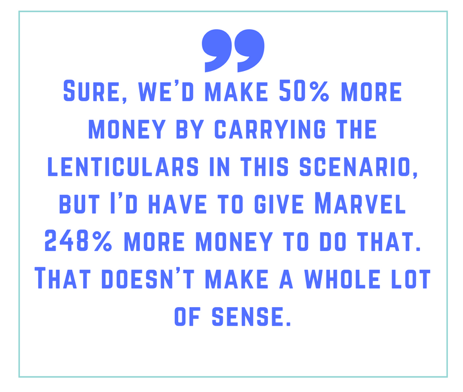
Here’s the thing: if the lenticulars were open-to-buy, I would be giving Marvel a bit over $2500 (the 605 copies of the regular plus the 725 lenticulars), instead of the bit under $1500 that I’m doing with the 823 regulars alone. All because they’re asking for about a $3600 buy-in in order to play the game at all. Marvel themselves clearly comes out the worst in this calculation (by some 40%), and made it less likely that “Legacy” can change their sales trajectory (which was the entire point of this stunt)
Will every store everywhere make these calculations the same way? Oh, no, I’m sure not – there are certainly stores that have already publicly (well, in private Facebook groups, but still) announced that they’re planning on selling the lenticulars on eBay for double cover price to those customers of mine that we’re not satisfying. And, yep, that could be a profitable bet, potentially.
But it’s a bet, and every bet comes with the chance of a loss, and I’ve lived through at least two occasions since I started in this business of retailers making the wrong bet and nearly collapsing the entire market along with them.
Something feels different to me this time: we’ve had public stories on shops like Lone Star (and mycomicshop.com) or Big Bang Comics flatly saying they’re not participating, and back channel I’m hearing from a lot of stores who say the same – there’s a Facebook poll on a retailer’s group that is running 34 “No” to 33 “Yes” for example, though that’s not scientific or deterministic or anything. But it feels to me that many retailers have had enough of the game playing and hoop jumping.
At the end of the day, there are far too many comics being published – I was actually thrilled and excited that there were “only” 267 items on FOC this last week, because the typical week is pushing closer to 350 these days! – and too many comics means that the only rational response in ordering is to be conservative about stock. “Meet or exceed” gates are wholly against most retailer’s mathematical interests, but literally the only way the system can be changed at Marvel is if retailers-as-a-class stop ordering the damn things at all. You may not see the real results from the October sales charts because I think it’s likely that just enough people will try to buy that magic lottery ticket, but come January next year we’ll know if there was any sustainable bounce from “Legacy” whatsoever.
If Marvel doesn’t have multiple on-the-fourth-issue-since-relaunch titles selling sustainably over 100k, then the whole thing will be an abject failure for the market, in my opinion.
**************************
Brian Hibbs has owned and operated Comix Experience in San Francisco since 1989, was a founding member of the Board of Directors of ComicsPRO, has sat on the Board of the Comic Book Legal Defense Fund, and has been an Eisner Award judge. Feel free to e-mail him with any comments. You can purchase two collections of the first Tilting at Windmills (originally serialized in Comics Retailer magazine) published by IDW Publishing, as well as find an archive of pre-CBR installments right here. Brian is also available to consult for your publishing or retailing program.


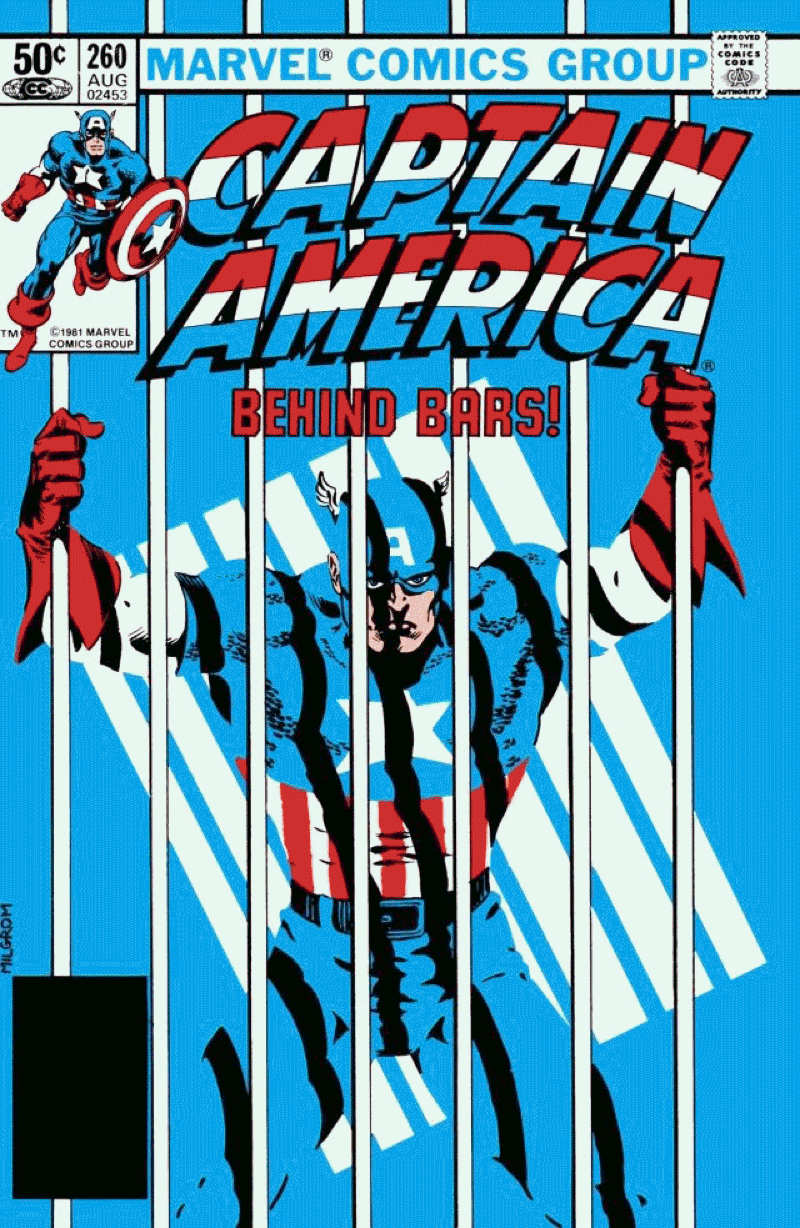



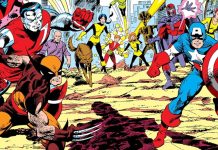
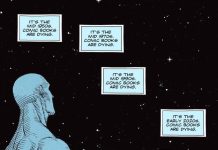



Amazing analysis of this situation, thanks Brian!
it looks like the only way to profit from the publisher’s strongarm selling technique (“buy more of X to get Y”) is to find buyers for the non-lenticular copies. That’s the puzzle, so maybe they get bundled together ar a discount for new readers, or those former Marvelites who have wandered off the path?
The alternative of course is to jump off the Marvel coercion bandwagon, and make the slow walk toward increasing sales of other publishers. But that’s a really difficult sell, with indies not approaching Marvel numbers. Tough call.
I think Marvel will be shocked when they see how many retailers opted out on this relaunch and the lenticular gateway. If it focused on bigger creators tackling these characters or even made the lenticulars open order, we would have ordered quite a lot but as it is, a lot of stores put their foot down and held off on this one. This should be interesting and probably didn’t go how Marvel thought it would.
I find this sort of thing fascinating. I know I say this a lot, but I have an electrical engineering degree and work in distributed computing and none of the math I’ve ever done is anywhere near this tricky.
It seems like you have to go through an unnecessary number of hoops to just order product to sell.
Quire frankly, I’m impressed anyone can make a living doing this. You guys are amazing.
A crazy question… has anyone analyzed the various variant cover initiatives, via the ICv2 Top 300 sales?
Both on a one-to-one comparison (like Mr. Hibbs did above… noting the sales data for the comparable book, the sales of the incentive variant title, and how much sales increased in regards to the required order percentage), and on a general analysis of previous months’ sales.
For example: #27 45.02 AMAZING SPIDER-MAN #27 $3.99 MAR 51,404
The Legacy issue would have to sell 64,255 to be a success for Marvel, yes?
Brian, what/how did your stores order the DC Lenticular comics, which did not have a threshold to reach? That is, if Marvel removed any incentive, letting you order cover A or cover B, what would have changed? What if Cover B was a flat 50%?
Brian, I and a couple other retailers I talk to regularly simply ordered what we thought we needed
of the non-lenticular covers, which in my case was mostly less than the previous issue, as I believe
many of these are going to be discounted with the hope of making money on the lenticular versions.
We did, however, place orders for the lenticulars, as we felt it was important that Marvel see how
much money they left on the table. Our orders for the lenticulars, in total, were about 3 1/2 times our
regular versions..
I’m holding out some small degree of hope that Marvel will, at the last minute, see the error of their
ways and allow open ordering on the lenticulars
retailers: “The only way to win is not to play the game” –that crazy-ass war computer from War Games
Marvel: it’s not so much that Legacy=pure market manipulation, it’s that we’re at that point now. Everybody’s cynically post-disappointed enough now, it’s just that Marvel’s ready to build on that. Like they’ve had the blueprints for a very long time. It makes it so…
entertaining?
Definitely most into Legacy for this story.
“We did, however, place orders for the lenticulars, as we felt it was important that Marvel see how much money they left on the table.”
I have no idea how the ordering system works but this seems like the right tactic to me. Marvel will either send them or they won’t. Why spend your time doing the calculations for them. Is there some kind of sanction for ordering comics you’re not eligible for?
If Marvel hadn’t driven me away after 20+ years of fandom, I would weep. I have long felt that the current leadership of Marvel, most of of whom seem to have either come to prominence or actually started shortly before or just after the 90s implosion, really have no idea how to run a publishing company.
I will give them credit for artistically and creatively engaging with a new audience after the 90s killed off for good whatever was left of the broader comic buying public that existed from the 40s through the 80s, but I think they did it at the expense of hardcores like me and they seem to be discovering that you can’t replace a 20-year comic reader with just one new person who reads them for five years. You ultimately need to replace them with four generations of 5-year readers.
Of course, this could just be the corporate overlords telling the guys running Marvel to do things they know are stupid…but there’s no indication of that I can see.
Mike
This whole lenticular cover ordering scheme appears to be Marvel saying “Fuck you and give me money” because their quarterly earnings are down and they don’t know any other way to raise them. Other than paying certain Image creators more money than they want part with to get them writing their big name books (again) and putting up with their corporate quarterly earnings editorially driven crossover tie in event interfering with their stories bullshit along the way.
Marvel’s short sighted strategies will further alienate retailers and incentivize them to promote other publishers’ books. I anticipate exceptionally low orders on new, marginal titles like the upcoming POWER PACK and MOKF one-shots as retailers take revenge on Marvel.
LL
I wonder how much the lenticulars will go for on ebay.
Sure, there are a lot of retailers saying no but I expect there will also be those ordering a lot and unlike ratio variants, these are open to buy once you meet the requirement. Would be interesting to see if the lenticulars are actually rare or if we end up seeing ebay flooded with Legacy LH variants.
This is what happens when the House of Ideas becomes creatively bankrupt and must resort to being the House of Hype and Marketing.
My biggest hope for “Legacy” had been that Marvel had realized just how much their greed and short-term sales strategies have absolutely tarnished their brand in the eyes of their most loyal fans, and that M:L would be about taking the gambles needed to go BIG and win back those fans. But this same old “exceed” nonsense just proves that they’re still only interested in artificially inflating *this month’s* numbers, as opposed to building long-term growth.
Matthew: “I have no idea how the ordering system works but this seems like the right tactic to me. Marvel will either send them or they won’t. Why spend your time doing the calculations for them. Is there some kind of sanction for ordering comics you’re not eligible for?”
What will happen is this:
A customer service representative at Diamond will call the account, let him know that his initial orders on the regular edition of the book aren’t sufficient to qualify for the lenticular cover, and suggest that he increase his orders on the regular edition. If he doesn’t, the order on the lenticular cover will be canceled.
Marvel will never see the orders for books canceled in this circumstance. They’ll only see the total orders for the books that Diamond actually needs for the qualifying orders.
Brian, forgive my lack of understanding, but my question is, “why”? It seems like Marvel would make scads more money by making these books open order and letting retailers just order what they want. By forcing a certain level of ordering, they have to know some retailers would react badly and just bow out. Or were they taking a chance, thinking they could force higher sales and more cash in their pocket, regardless of whether it hurts retailers? That is acting like a bully, not a partner. Do I understand that correctly?
Jerry Smith: your take is not any different than mine on this. Marvel IS acting more like a bully than a partner.
-B
You guys, I have been in communication with the REAL Real Brimstone, and have determined that we have a troll on our hands here. So all of “Brimstone’s” posts have been removed. It was pretty funny when it started but it has gotten out of hand, and the Real Brimstone deserves to run his business free of this kind of nonsense.
My apologies to Brian, Brimstone and all the readers who got taken in by this nonsense.
It seems to me that over the last few years Marvel’s concept of promotions, especially when dealing with variant covers (which is about the only promotion they do, outside of “leak story details to friendly media outlets” and “publish a lot of Inhumans and everyone will love them eventually”) is geared towards a certain subset of retailers, maybe small in percentage of stores but larger in terms of percentage of the market. These are retailers who do a lot of mail-order/on-line business, and don’t have a problem selling the variants for multiples of cover price even on the day of release (or even in advance of release). These are the retailers who previously did the buy-in on Marvel’s custom covers (with minimum orders in the thousand+ copies range) or 1:1000 variants.
The thing is, the market for those retailers depends on a large extent on “we can offer you something your current local retailer can’t”, so the fact that the gates to get the lenticular covers will prove to be impractical for many retailers to clear isn’t seen as a flaw in that case, but an essential feature of the program. If note everyone has them, that creates the market for those that do buy in big (far beyond their local demand).
Brings back memories of 1991-1992-1993 .. & What do they say: Those that do not learn from history …
So David Gabriel probably isn’t going to win the ‘ComicsPRO Industry Appreciation Award’ in back to back years?
I miss fake Brimstone. He was hilarious.
I have never considered Marvel a “partner.” They are a supplier and now with digital sales have become a competitor.
LL
@Torsten Adair
Because playing with spreadsheets is a hobby of mine, here’s a chart of the comparables and the targets:
http://imgur.com/fxMBvlr
Mind Lenticular Homage variants (and Trading Card and How-to-Draw, etc) are still additive to the target numbers in the charts.
Rui, I know it is GIGO, but your numbers on CABLE and DEFENDERS are almost certainly wrong because Marvel overshipped those, and the DCD sales charts includes overships. FWIW.
-B
Shame the contents the same sjw bullshit
Brian, that’s why I kept the asterisks.
Based on dollar rankings, it seems Cable #2 overshipped by ~2K copies so target is potentially ~30K.
Made a mistake with Defenders. I used Defenders #2 figures and even had a typo (46,518 instead of 46,158). Defenders #3 is 35,763 and based on dollar rankings, it overshipped by ~5K so target is also potentially ~30K.
Thank you for sharing this is awesome blog thanks a lot for giving me this great opportunity to write on this.please visit our website I assure you that it will be very useful for you
I was just at my store (Graham Crackers in downtown Chicago) and their policy for the price of these lenticular covers was that if you pre-ordered it, you got it for cover price. If you were picking it up off the rack, they already had it bagged and boarded with a $1 increase in the cover price.
One reason I suspect Legacy is a tepid sale is because it doesn’t mean anything in regards to deeper problems. Now that I’ve read a bunch of reviews, they all sound like Marvel Team Ups. But in spite of their individual quality, good, bad, or in-between, the product line is still too expensive for what you get in return, when politics do come up it’s judgmental, and a lot of stories seem like re-hashes of prior re-hashes, Unlike Rebirth, Legacy doesn’t address, or even admit the existence of any of this.
Comments are closed.